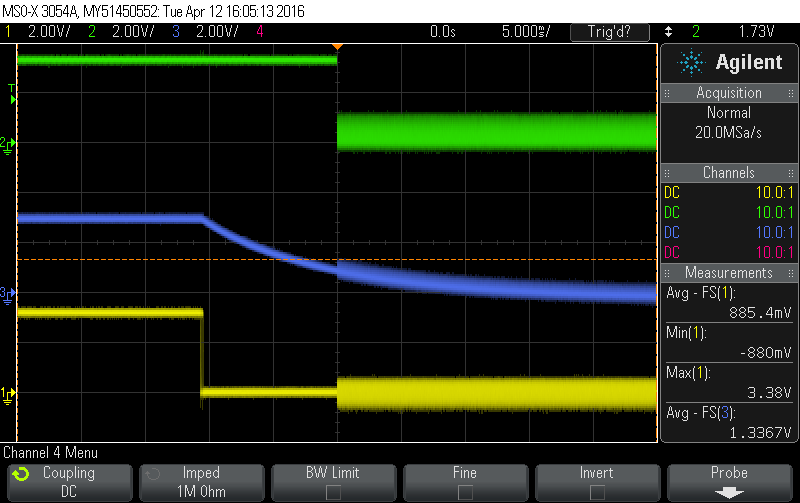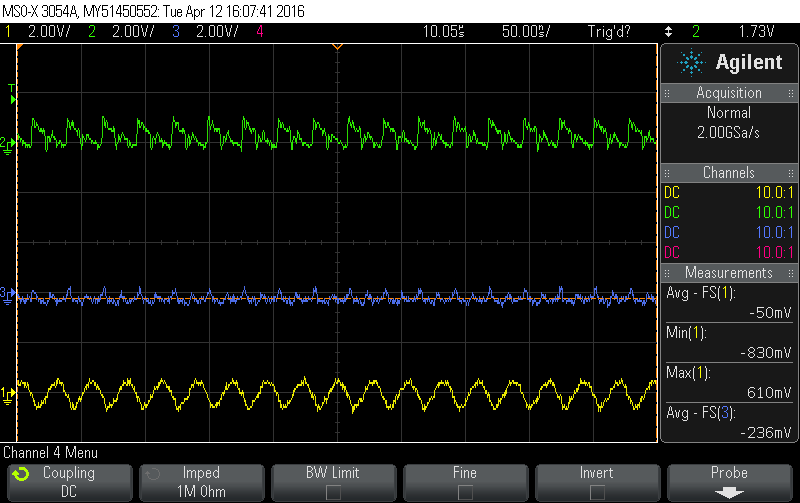I have a board with a processor on it that has 4 GPIO pins connected to port A of a TXB0104. Port B of the TXB0104 is connected to a connector that connects to a cable that goes off board. The cable is about 3 inches long.
The processor and port A of the TXB0104 can be powered at either 1.8V or 3.3V. Port B is powered at 3.3V. When the processor and port A are at 1.8V, everything works fine. However, when the processor and port A are at 3.3V, I get oscillations during certain transitions. For example, when the external cable has a signal transition from high to low (i.e. a port B signal is driven low which should translate to port A), that signal starts to oscillate at around a 27ns period. I am driving that port B signal with a TI SN74LVC2G17 chip. I inserted a 100 Ohm resistor between the output of the SN74LVC2G17 and the TXB0104 as a test and saw the oscillation still occuring, but only on the TXB0104 side. In other words, the output of the SN74LVC2G17 was stable but the other side of the resistor (connected to the TXB0104) still oscillates on the hight to low transitions.
Another example of the oscillation issue is when I drove a signal on the processor side (TXB0104 port A) from a low to a high. In that case I had the signal on the port B side oscillate just as the previous example. I haven't probed the port A side of the TXB0104 yet because it is not easy to get to but I could if necessary.
So my question is, how can I avoid this oscillation problem? I am stuck with the board that has the TXB0104 but I can put whatever I want on the other end of the cable. I can add a choke or something if that would help (haven't tried yet). Based on the datasheet, it sounds like my problem is due to the fact that I have too much capacitance on the port B side of the TXB0104 because that can cause "O.S. retriggering, bus contention, output signal oscillations". I can't remove capacitance caused by cables, connectors, long traces but I can add anything to the cable side. Any suggestions or help is greatly appreciated.
I saw some posts with similar issues to mine but none seemed to have an answer I could use.
Thanks,
Nick



